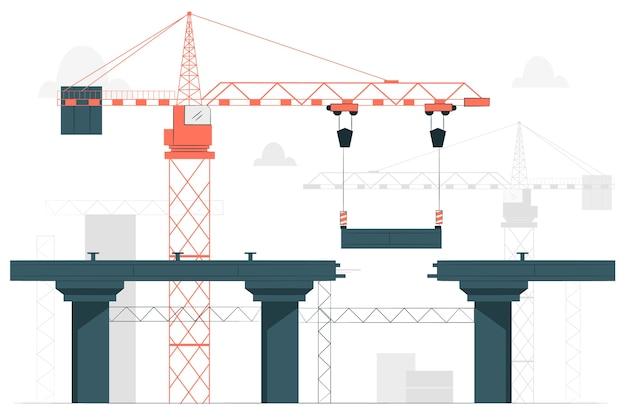Understanding the factor of safety is crucial when it comes to ensuring the strength and security of structures like bridges. As a blog writer in 2023, I’m here to answer your questions and provide insights into this important topic. So, what exactly is the factor of safety for a bridge?
In this blog post, we’ll explore the concept of the factor of safety and its significance in the construction and maintenance of bridges. We’ll delve into the factors that influence the calculation of this critical value, and discuss whether a higher or lower factor of safety is preferable. Additionally, we’ll touch upon related topics such as human factors, health and safety considerations, and environmental influences.
Join me on this journey as we dive into the fascinating world of bridge engineering and uncover the factors that contribute to the safety and longevity of these vital structures. Let’s begin our exploration of the factor of safety for bridges.

The Importance of the Factor of Safety in Bridge Design
When it comes to building bridges, safety is paramount. After all, we don’t want our bridges collapsing and sending unsuspecting motorists plunging into rivers below. That’s where the factor of safety comes into play, serving as a safeguard against potential disasters and ensuring the structural integrity of these monumental engineering marvels.
What Exactly is the Factor of Safety
In simple terms, the factor of safety is a measure of how much stronger a bridge is than it needs to be. It accounts for uncertainties in material strength, loads, and other design variables to provide a cushion of strength that ensures the bridge can handle unexpected conditions without catastrophic failure. A higher factor of safety means more redundancy and a greater margin of safety, which is always a good thing in the world of bridge engineering.
Crunching the Numbers: Calculating the Factor of Safety
Determining the factor of safety for a bridge is no walk in the park. It involves complex calculations and meticulous analysis by structural engineers. They consider various factors such as the estimated live loads, dead loads, wind loads, and earthquake loads that a bridge might experience during its lifespan. By applying appropriate safety factors to these loads and comparing them to the bridge’s actual capacity, engineers can accurately assess the level of safety provided by the structure.
Safety First: Ensuring Bridge Resilience
So why do we even need this factor of safety? Well, let’s imagine a world without it. Bridges would be constructed with bare minimum strength requirements, which means they might barely withstand anticipated conditions but would have no capacity to handle unexpected events. A passing truck a little heavier than expected, a gust of wind slightly stronger than the standard, or an earthquake a tad more intense than predicted—any of these could potentially lead to disaster. Luckily, the factor of safety is here to prevent such calamities.
The Ideal Factor of Safety
While safety is a top priority, engineering a bridge with an excessively high factor of safety can be costly and inefficient. Designing a bridge with a factor of safety of 100 might sound impressive, but it would be overkill and a waste of resources. Engineers strike a balance between safety and practicality, carefully selecting an appropriate factor of safety based on the specific requirements and constraints of the project.
The Evolution of Bridge Safety
Over the years, bridge design and construction techniques have improved significantly. Advancements in materials, technology, and engineering practices have allowed for more precise calculations and enhanced safety measures. This progress has resulted in safer bridges that can withstand the test of time and unforeseen circumstances, keeping travelers safe and ensuring smooth journeys across our waterways and ravines.
Wrap-Up
So, the factor of safety is like the superhero cape of bridge engineering, offering protection against potential disasters and giving us peace of mind while crossing these mammoth structures. It’s a crucial aspect of bridge design that ensures the safety of millions of people who rely on these vital transportation links every day. By considering the uncertainties and providing a cushion of strength, engineers can construct bridges that are not only functional but also incredibly resilient. So, the next time you drive over a bridge, you can appreciate the complex calculations and careful considerations that have gone into making it safe for your journey.

FAQ: What is the Factor of Safety for a Bridge
Find answers to all your burning questions about the factor of safety for bridges.
What is Human Factor Theory
Human Factor Theory is a field of study that focuses on how humans interact with systems and technology. It explores how human strengths and limitations can impact performance, safety, and overall well-being.
What is the Factor of Safety in Strength of Materials
In the context of strength of materials, the factor of safety is a measure that determines the structural reliability and robustness of a component or system. It represents the ratio between the maximum load a structure can safely handle and the expected or design load.
What Factors Influence Today’s Healthcare System
Today, various factors shape the healthcare system, including advancements in medical technology, government regulations, population demographics, and changing patient expectations. These factors continuously shape and transform the landscape of healthcare.
What Are the Factors Affecting the Work Environment
Several factors can affect the work environment, such as organizational culture, leadership style, communication channels, workload demands, employee relationships, and physical conditions. It is crucial to create a positive and supportive work environment to enhance productivity and well-being.
Is a Higher or Lower Factor of Safety Better
In terms of the factor of safety, a higher value is generally considered better because it indicates a larger safety margin between the expected load and the maximum load a structure can handle. A higher factor of safety provides a greater level of security against failure or unforeseen circumstances.
What Are Examples of Human Factors
Human factors can manifest in various situations, such as interface design, workplace layout, equipment usability, and training programs. For instance, the layout of buttons in a cockpit, the arrangement of furniture in an office space, or the simplicity of instructions in a user manual are all examples of human factors.
What is the Safety Factor Ratio
The safety factor ratio is a quantitative measure used to assess the reliability and safety of a structure. It is calculated by dividing the ultimate or maximum load the structure can withstand by the expected or design load. A higher safety factor ratio indicates a safer and more robust structure.
What Are the Three Main Influences on Health and Safety
The three main influences on health and safety are individual behavior, organizational practices, and the physical environment. These factors work collectively to shape the overall safety culture and well-being of individuals in various settings, such as workplaces, homes, and public spaces.
What is a Human Factor Hazard
A human factor hazard refers to any potential source of harm or danger resulting from human behavior, limitations, or errors. These hazards can arise from factors such as poor decision-making, cognitive biases, distraction, fatigue, lack of training, or inadequate communication.
What Are the Types of Human Error
Human errors can be categorized into three types:
-
Slips and lapses: These errors occur due to a lack of attention, focus, or concentration. For example, forgetting to attach a document to an email or skipping a step in a standard procedure.
-
Mistakes: Mistakes happen when individuals make incorrect decisions or take the wrong course of action, often due to inadequate knowledge or understanding of the situation.
-
Violations: Violations occur when individuals consciously deviate from established rules, procedures, or norms. These can include shortcuts, non-compliance, or intentional disregard for safety protocols.
What is the Factor of Safety for a Bridge
The factor of safety for a bridge refers to the ratio between the maximum load a bridge can sustain and the expected or design load. It ensures that the bridge can handle dynamic forces, environmental impacts, and potential fluctuations in traffic without compromising its structural integrity.
What Are System Level Factors
System level factors encompass a wide range of elements that can influence the overall performance and safety of a system. These factors include system design, maintenance procedures, operational protocols, emergency response plans, and the integration of human factors to optimize system performance.
What Are Human Factors in Health and Safety
Human factors in health and safety deal with the interactions between humans and their work environment to promote safety, well-being, and effectiveness. These factors encompass ergonomic design, human cognition, physical and mental capabilities, communications, training, and error prevention strategies.
What Are the Factors Affecting the Environment
The factors influencing the environment are numerous and diverse. They include climate change, pollution, deforestation, population growth, industrialization, urbanization, and resource consumption patterns. These factors pose significant challenges and require collective efforts to mitigate their negative impact on the environment.
What Are the Four Human Factors
The four primary human factors are:
-
Physical Factors: Physical factors involve elements related to human physiology, including ergonomics, biomechanics, and physical stressors like noise, temperature, and lighting conditions.
-
Cognitive Factors: Cognitive factors encompass mental processes such as perception, attention, memory, decision-making, problem-solving, and situational awareness.
-
Psychosocial Factors: Psychosocial factors consider the social and psychological influences on human behavior and well-being, including job satisfaction, organizational culture, stress, and interpersonal relationships.
-
Organizational Factors: Organizational factors pertain to the impact of management practices, leadership style, policies, and procedures on human performance, safety, and overall organizational effectiveness.
How Can We Understand the Nature of Human Factors
Understanding the nature of human factors requires interdisciplinary research, collaboration between experts in psychology, engineering, physiology, design, and human-computer interaction. By studying human performance, capabilities, and limitations, we can better design systems, environments, and technologies that align with human needs and promote better outcomes.
Now armed with all the essential knowledge about the factor of safety for bridges, you can appreciate the intricate dance between structure and reliability. Remember, understanding human factors, safety protocols, and the factors influencing the environment can help us build a more secure, efficient, and sustainable world. Stay curious and keep exploring the fascinating intricacies of the bridges that connect us all!
